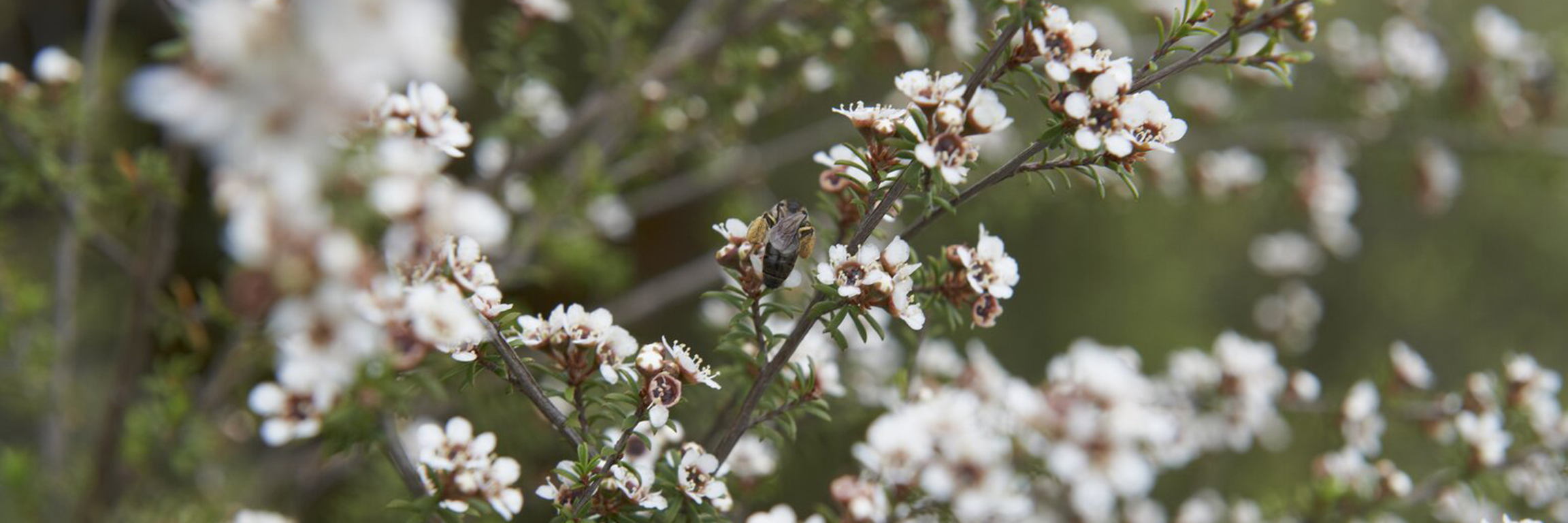Scrub in the Waikato
When European settlers began exploring the Waikato region they described enormous expanses of scrub. In 1840 scrub covered about 20 percent of the region. However, scrub was generally considered to be wasteland by European settlers and most of it was cleared for farmland.
Today scrub covers about six percent of the region. The largest areas of scrub are in the Taupo, Thames-Coromandel, Waitomo and Otorohanga districts. It’s important we recognise the value of the remaining areas of scrub and the unique species that live in them.
There are many different types of scrub in the Waikato, falling into two main categories:
Short-lived (temporary) scrub is usually made up of mānuka and common shrubs like five-finger, coprosmas, young pittosporums and wineberry. Short-lived scrub is nature's 'band-aid', covering bare land or abandoned paddocks. It allows the land to develop back into native forest, usually within 30 years in suitable sites.
Long-lived (persistent) scrub is only found in areas where the conditions are too harsh for native forest to take over. You'll find it in our toughest areas, on mountains, in wetlands, along exposed coastlines, on poor soils and in geothermal areas. Highly specialised plants often grow in long-lived scrub, including prostrate kānuka, marsh ribbonwood, mountain neinei, coastal tree daisy, snow totara and whip-cord hebes.
A valuable resource
Many people think of scrub as a nuisance. However, scrub plays a valuable role in our landscape. In many areas they form ‘corridors’ between other areas of natural vegetation. Some areas of scrub act as a nursery for regenerating forest. Other areas play an important role in buffering native forests or wetlands.
Areas of scrub are home to many native plants and animals, including kiwi and lizards.
Many unusual and rare plants can be found in scrub, including many of the 50 or so species of orchid found in our region.
Look out for ground-dwelling species such as the horned orchids, sun orchids and the ‘greenhood’ orchids. Areas of scrub can also be home to epiphytic orchids that perch on the branches of native shrubs.
A unique feature of New Zealand’s plant-life is the high number of shrubs that have very small leaves and twiggy, interlaced branches. Plants with these characteristics are called ‘divaricating’ species and many of them are only found in scrub. Many scientists believe that this twiggy growth form evolved in response to moa browsing.
Some plants specialise in living in scrub, making them vulnerable to habitat loss. Several of our scrub species are rare, for example the:
-
- small, ground-dwelling, greenhood orchid (Pterostylis puberula)
- native daphne (Pimelea tomentosa)
- pale-flowered kumarahou (Pomaderris hamiltonii)
- parasitic mistletoe (Korthalsella salicornioides).
Scrub also plays an important role in our landscape by:
- holding soil together in hill country, preventing slips and minimising erosion
- absorbing and storing greenhouse gases
- providing useful products, such as honey and essential oils from mānuka scrub
- providing sources of traditional medicine, for example, from the native shrub kumarahou.
The future of scrub
Large areas of scrub in our region have been cleared for grazing land or pine plantation. About 800 hectares of scrub have been cleared for pine plantations each year since 1993.
However, scrub is actually increasing in some parts of the region where marginal farmland is being retired or subdivided for lifestyle blocks. This can be seen on the Coromandel Peninsula and along the west coast of the region. Much of this scrub will eventually develop into young forest.
Save your scrub and earn money
New Zealand is obligated to off-set its carbon gas emissions under the Kyoto Protocol. This means cancelling the amount of carbon dioxide (CO2) produced by industry by making sure we have enough areas of vegetation to ‘soak’ up the excess CO2.
Areas of fast-growing vegetation such as scrub absorb high levels of CO2 and are referred to as carbon ‘sinks’. It has been estimated that New Zealand’s scrub could be accumulating about one million tonnes of CO2 each year. This is a quarter of New Zealand’s reported CO2 emissions for 1995.
Areas of scrub are eligible for ‘carbon sink credits’, which can be sold to companies or organisations that produce high levels of CO2.







To ask for help or report a problem, contact us
Tell us how we can improve the information on this page. (optional)